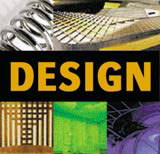How would you cope when the heat is on?
How are design consultancies weathering the current business climate and what is their outlook like? Phil Lawder asks some senior figures in the industry

Temperatures soar, but few design consultancies are soaring. If you’re sweating over how your consultancy is going to perform over the next year, read on.
Now is the time for a fitness check – to tighten your business and strengthen that offer – because, as Elmwood chairman Jonathan Sands puts it, ‘the old model doesn’t work anymore’.
Manage your people
Design consultancies are surprisingly poor at managing their own staff. Define clear roles and ensure each person knows his or her responsibilities, without getting hung up on empty titles borrowed from advertising.
‘There are no standard business models, set up what is right for you,’ says Williams Murray Hamm director Richard Williams. ‘Everyone, from the managing director down, should be earning for the company.’
Belt-tightening has left many senior people under-supported. Free them up to earn money for you. ‘Make your best people feel loved and clear out the weak links,’ explains Design Bridge chairman Jill Marshall.
Leaders must be accessible, not shut away in executive offices. Involve the staff in the direction of the company. ‘Tell them the truth about how you see the future,’ says Sands. ‘No-one will thank you for being over-optimistic and employees are very good at reading the body language of the bosses. They will talk about it even if you don’t.’
Gather the low-hanging fruit
Your most cost-effective business is with your existing clients. You know how these clients work and what they expect, so don’t sulk if they ask you to repitch.
The best consultancies approach their clients with ideas for new products, new ways of capturing the consumer relationship and cross-fertilised thinking from other markets. Relationship Audits partner Simon Rhind-Tutt says, ‘Clients want ideas and initiatives that go beyond the brief and a level of skill that will get it right first time.’
Get real about pitching
Senior people spend at least 25 per cent to 30 per cent of their time pitching – often inappropriately.
Pitching can become addictive. Only pitch if you’re absolutely determined to win and convinced that you have the skill and reputation to win. Cost pitching realistically, covering time and cash cost. And be ready to walk away if you find that the rules have changed unreasonably.
Do what you are good at first
Don’t let yourself get bored. New income streams cost money. Build out from your firmest reputation. ‘By the way, we also do websites and new product development’ is not convincing.
Be ready to farm out what you don’t do well. There’s now an excellent bank of freelances and smaller operations ready to slot in.
Remember that with big strategic issues, you’re on the client’s home territory and cannot bluff. Bring in a big hitter if necessary.
Be sure you bridge the verbal and the visual. ‘Design consultancies can’t get away with bleating about strategic input and excellent management without actually being able to offer it,’ says Interbrand managing director Tony Allen. ‘Ten years ago you could spread a sense of magic that might mask the chaos under the surface. Today, the speed factor is forcing the stakes up.’
Service
Take a long-term view and ensure senior people care for key clients. As Enterprise IG managing director Patrick Smith observes, ‘Design groups tend to define the business around what they want, not what the client wants. Get the shape of your business right, listen to the marketplace, understand your clients’ needs and what they find compelling. Recognise that this is a continuous process.’
Be flexible and responsive to change. ‘You’ll often be working with other partners appointed by the client in nimble and focused teams,’ says Cheryl Giovannoni, managing director at Coley Porter Bell.
Differentiate
Differentiating on the personality of the consultancy founders will always have limited success. Equally, differentiating by completely restructuring the process will only confuse. And clients have had enough of trademarked pre-design stages that add no new insights and are not integrated into the process.
True differentiation comes from establishing a value in the eyes of the client above that of your peers – a value attached to the company, not to an individual. It can be in creative reputation, though this needs to be radical to be noticed. It can be in setting work into a useful business and brand context, or it can be through intense servicing, showing that you really care about the client’s business success. Ideally, it’s all three.
Differentiation is not a subtle thing. Rhind-Tutt estimates marketing directors dedicate no more than 10 per cent of their week to all their creative groups. Present a clear, simple message. In other words, brand yourselves with the rigour you expect of your clients.
Finally, understand your money
More companies fail in the year after a recession than during one; they are at their overdraft limit and start to over-trade. Watch your cashflow – clients won’t start paying you more quickly. The longer your debtor chain, the more you will have to find to survive.
Manage tightly. Understand your funds in great detail. Where are the future bear traps? What’s a genuinely realistic forecast of future income? After all, fees aren’t going to suddenly rise.
In summary, think like a business, act confident and dare to enjoy the heat of success.
Phil Lawder advises design companies on strategy and structure – phil@jlawder.freeserve.co.uk
-
Post a comment




